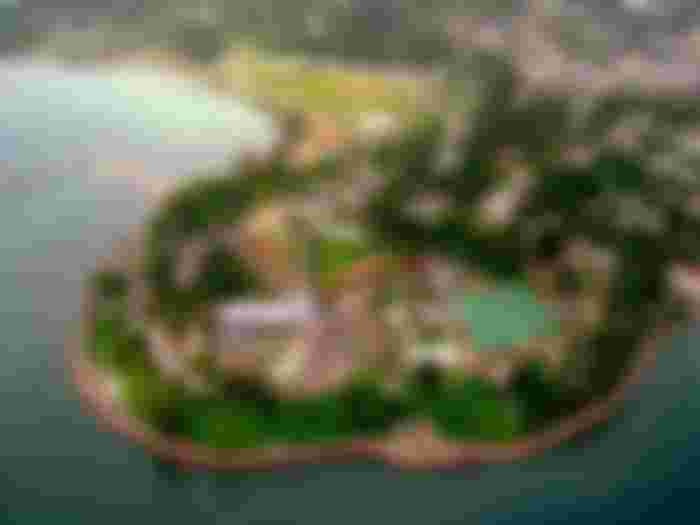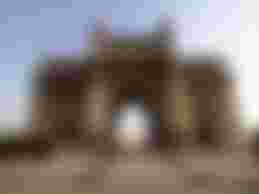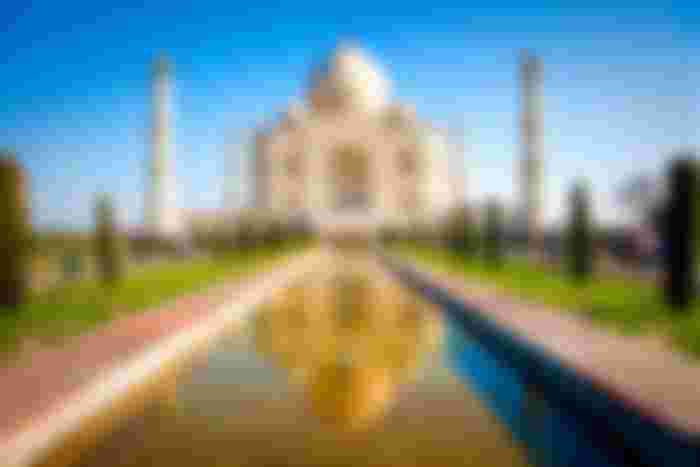In the following report, I introduce some examples of amazing historical sites in India.
Unlike other countries, There are many different religions, languages, beliefs and traditions in India; It is therefore not surprising that historical sites in India reflect the diversity of ancient architectural styles and cultures . Here are some examples of amazing historical sites in India for tourist information.
Maharaja

Maharaja, known as the Palace of the Winds, is one of the best tourist attractions in Jaipur. This beautiful sandstone palace in the shape of Lord Krishna was crowned by Maharaja Sawai Pratap Singh in 1799. The Maharaja is also a great example of Rajputana architecture. Its pyramidal shape and 953 beautiful windows make this place a unique attraction of the city.
The interior of the palace is remarkable for its long corridors, as well as the fact that it has no stairs - the floors being connected by special slopes. 953 windows in the Maharaja are not made by chance - they are on display for the women of the Royal Harem who never appeared in public! These windows allowed them to see people's lives and only admired the magnificent view of the city.
Kala Pani

The cell prison, also known as kala Pani, is located in the port city of Blair on the islands of Andaman and Nicobar Islands. The collection turned into a torture chamber for Indian activists fighting for independence. Its construction was completed in 1906 and today kala Pani is considered one of the national monuments of the country.
Literally every corner of the prison "can" tell you the stories of the resistance, the victims and the suffering of India's great freedom fighters, such as Birendra Kumar Ghosh, Upendranat Banerji, Hem Chandra Das, Ulaskar Dutta, Bibhuti Bhushan Sarkar. There are 696 solitary cells.
Gate of India

India Gate, Mumbai's most famous landmark. Construction of this arch in Hindu-Saracen style architecture began in 1911 and was completed in 1924. The main purpose of this huge structure was to commemorate King George V and Queen Mary, who visited Mumbai in 1911.
The Gates of India are of great importance in view of the fact that they are a great symbol of British India and the British Emperor. Visitors can also see a statue of Shivaji, the seventeenth-century warrior king, in front of the Indian Gate Arch.
Ajanta Caves

Ajanta is the most famous Buddhist monument in India, located in Aurangabad (Maharashtra). 30 caves In the rocks of this complex, the caves of the Buddhist temple-monastery are carved in the second century BC. Out of 30 caves, five halls have steps and the rest of the monastery neighborhoods. Agenta Caves is also a UNESCO World Heritage Site.
Ancient paintings depicting various events in the life of the Buddha and statues are the main attraction of these caves; And local masonry is one of the rarest in the world.
Stupa Sanchi

Stupa Sanchi (Madhya Pradesh) is the oldest stone building in India and also one of the most popular Buddhist buildings in the country. It was built in the third century BC by order of Emperor Ashoka.
The four main gates at Sunnystop depict scenes from the Buddha's life. You can also find many lacquer engravings and images of Buddha, preserved from the Mauritanian Empire.
Mysore Palace

Mysore Palace can be found in the southern Indian city of Mysore (Karnataka). In fact, it was built by different empires at different times. The main reason for the palace's different architectural styles is that it was built at different times - from Hindu-Saracen architecture to Hindu, Muslim, Rajput and Gothic.
Gray granite and pink marble are mainly used for construction. The public hall and the royal wedding hall inside the palace have become the main attraction for visitors today. Interestingly, the weapons and arsenal of the fourteenth century used by the royal family are also stored in this palace.
The Taj Mahal

One of the Seven Wonders of the World is located in Agra (Uttar Pradesh). It is precisely because of this monument of love that the city of Agra has become the most visited place by tourists in India. The White Marble Tomb, erected by the Mongol emperor Shah Jahan in memory of his third wife, is a UNESCO World Heritage Site.
The construction of the Taj Mahal took 20 years and began in 1632. About 20,000 people worked on the construction of the tomb, and 1,000 elephants were used to transport materials. Taj Mahal architectural style combines Islamic, Persian, Ottoman, Turkish and Indian architecture.
The four sides of the Taj Mahal are exactly the same, and its most prominent feature is that the tomb takes on a different color at different times of the day: pink in the morning, milky white at noon, and golden at night. On its walls you can also see derived Persian calligraphy verses.
♤♡◇♧♤♡◇♧♤♡◇♧♤♡◇♧♤♡◇♧♤
Hope you enjoy💛







Thats nice.